‘Dollhouse – A Retrospective’ at Louisiana Museum of Modern Art is a disquieting collision with American suburbia. It’s the first survey of the career of the Californian artist Kaari Upson since her death in 2021 at the age of 51 from breast cancer. The show drops us into a deeply personal landscape – the smog-filled valley of San Bernardino, where the artist grew up alongside the threat of earthquakes, windstorms and mudslides. The frameworks and furnishings of American tract houses are reinterpreted as sculptures, videos and installations that excavate the lives lived within and between these spaces.
One resident is Larry, who was perhaps Upson’s most important collaborator and muse. Larry, as Upson named him, was a Hugh Hefner type who lived next door to the artist’s parents. After a fire destroyed much of his McMansion, Larry’s abandoned diaries and mementoes became an obsession for Upson, inspiring her best-known body of work. In The Larry Project (2005–12), a room from Larry’s house is recreated at Louisiana from latex – drooping and soiled – with the words ‘I hate life’ inscribed on a wall. At the end of the survey, Upson and Larry are shown side by side as charred bodies, as if tragic lovers in some mutual suicide pact.
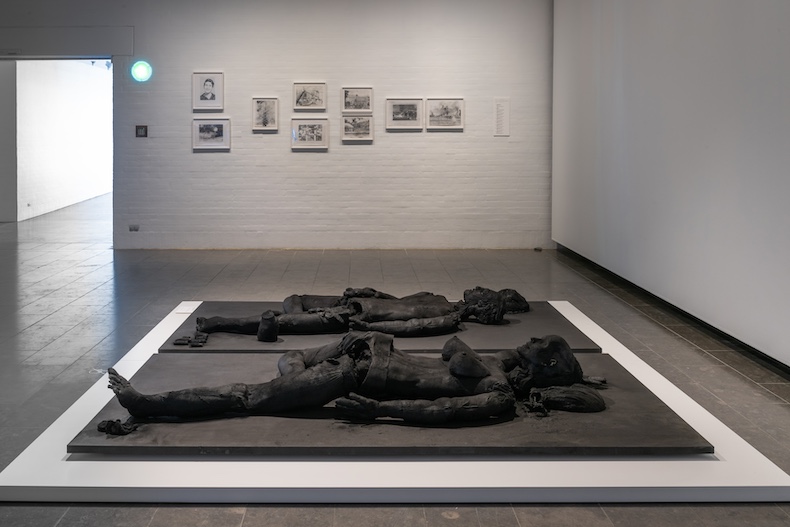
Installation view of Untitled (Charcoal Figures) (2010) at the Louisiana Museum of Modern Art, Humlebæk, 2025. Photo: Kim Hansen/Louisiana Museum of Modern Art; © Esmé Trust/Kaari Upson Trust
Larry is less of a character in his own right than a mouthpiece for Upson’s exploration of toxic machismo. In a fibreglass version of the Playboy grotto, projected videos show Upson living out the Hefner fantasy of sex with identical twins, clad in prosthetic vagina and breasts; these are interspersed with accounts of women trying to get into the Playboy mansion. I couldn’t help thinking of another chronicler of Americana, Mike Kelley, whose luminescent rendition of Superman’s Fortress of Solitude contains a miniature version of the hero’s home city of Kandor. Both works are fantastical, but in Upson’s hands the grotto becomes a stage for the exaggerated expression of desire.
Upson’s doll’s house is enlarged to vast proportions in the installation THERE IS NO SUCH THING AS OUTSIDE (2017–19). Inspired by those owned by the artist’s mother and her friend Kristine, the doll’s house is also the backdrop to videos of Upson and Kristine dressed in sexy nurses outfits, eyes closed and faces painted to look like one another. The two women bumble about the set recounting shared memories from their youth. It’s a sardonic interpretation of the doll’s house as a place where girls can play at domesticity.
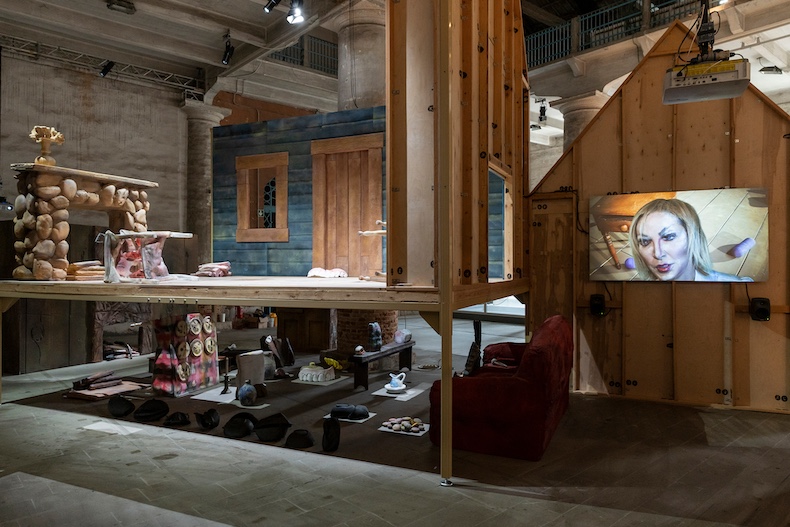
Installation view of THERE IS NO SUCH THING AS OUTSIDE (2017–19) by Kaari Upson at the 2019 Venice Biennale. Photo: Timo Ohler; courtesy Sprüth Magers; © Esmé Trust/Kaari Upson Trust
Other furnishings are the basis of sculptures in latex, resin and urethane that resemble the remains of some apocalyptic disaster. Warped couches erupt from the floor in Left Brace Erase, Back Brace Face (2016); baby bottles protrude from surfaces in Art Baby Bottle (5 gal) (2015); sunken mattresses hang from walls and old pieces of furniture are left flaccid and sullen in Brown Recluse (2015). Upson cast such pieces from real objects, many of which have seams or splits that, in these painted sculptures, look like navels or orifices, blurring the boundary between domestic space and human flesh.
Upson’s painterly approach to sculpture is evident in her series Portrait (Vain German) (2020–21), made shortly before her death and shown in part at the 2022 Venice Biennale. Three-dimensional scans of miniscule paintings have been enlarged to blur their original details, then cast using silicone moulds before being painted again with aqua-resin. Upson had no idea what the results of this experimental process might be, but a face appears through the layers in differing, swollen degrees, which gradually takes on the quality of a death mask. The title refers to vanitas paintings, as well as Upson’s own mother, Karin, who emigrated from Germany and died of cancer in 2020, just a year before her daughter.

Installation view of Mother’s Legs (2018–19) by Kaari Upson at the Louisiana Museum of Modern Art, Humlebæk, 2025. Photo: Kim Hansen/Louisiana Museum of Modern Art; © Esmé Trust/Kaari Upson Trust
The artist’s mother was a key figure in Upson’s work. She dominates the latter half of the exhibition via Mother’s Legs (2018–19), a fleshy thicket of sculptures modelled on her knees that could just as easily be hanging carcases in a slaughterhouse. She returns in the series that Upson was working on when she died, Untitled (Foot face) (2020–21), in which a grinning face is overlaid with a dangling foot. These surreal images frame a complex, sometimes ridiculous mother-daughter relationship and their intertwined identities. This kind of doubling appears again and again in Upson’s work: the sculpture Two Hers (2017) is formed of two identical mannequin-like figures lying on top of one another, while in the Kiss paintings she has smooshed her wet self-portrait against Larry’s to make a hybrid of the two.
Upson kept on working through the illness that shaped the final decade of her life, right until her death. That bravery is evident in the art on show here, frequently colliding the beautiful and the grotesque and playing with questions of identity and selfhood. Such is the depth and variety of Upson’s work that this, her first posthumous retrospective, will surely not be her last.
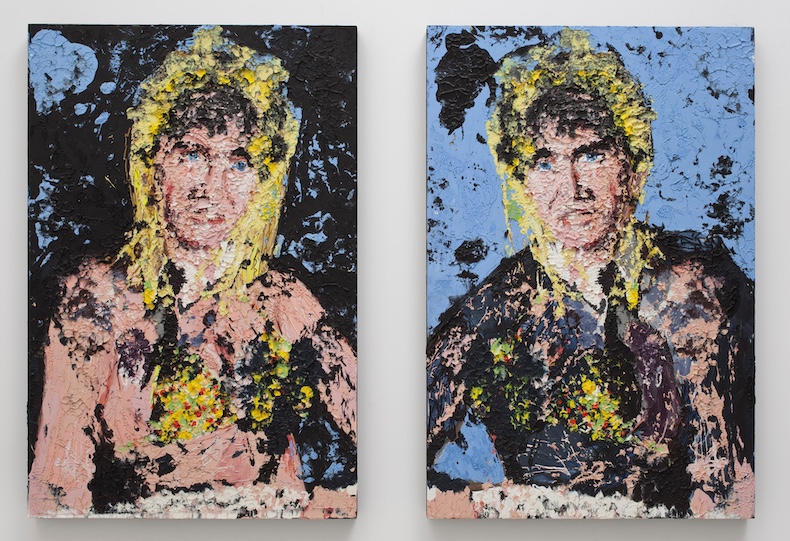
Untitled (Kiss) (2007; detail), Kaari Upson. Courtesy Sprüth Magers; © Esmé Trust/Kaari Upson Trust
‘Kaari Upson: Dollhouse – A Retrospective’ is at the Louisiana Museum of Modern Art, Humlebæk, until 26 October.

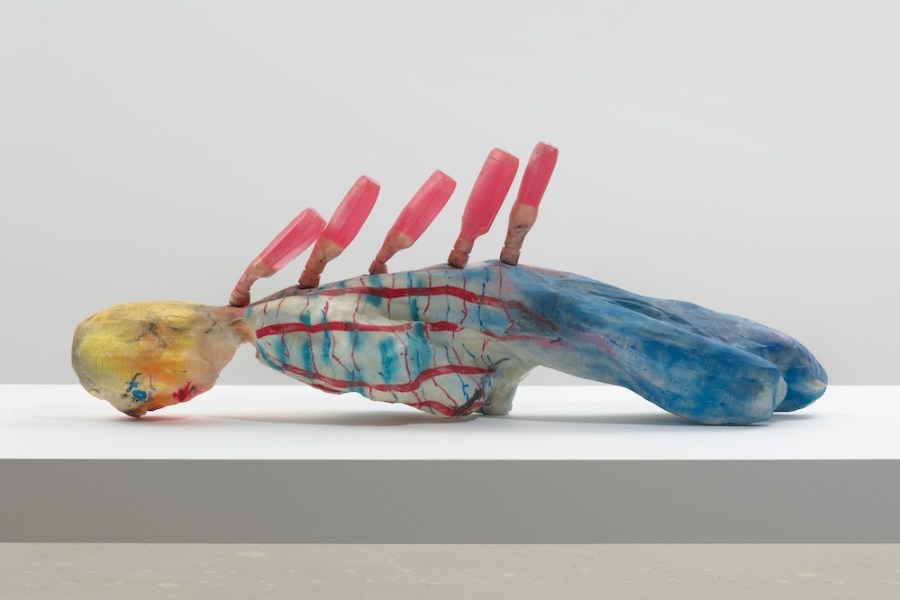







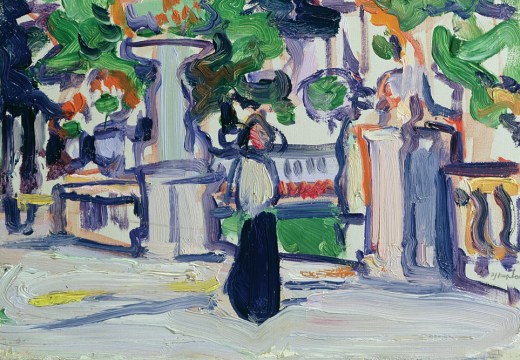
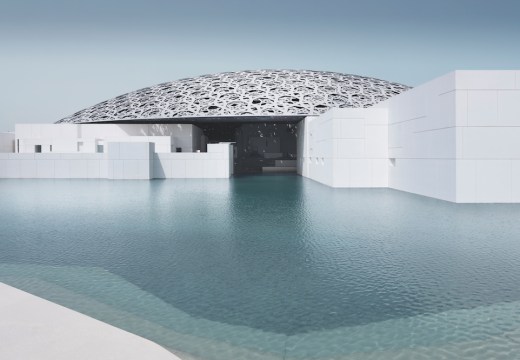
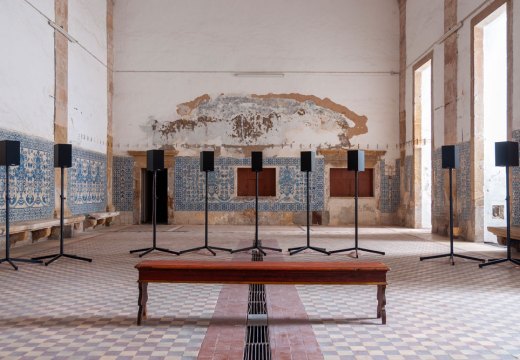
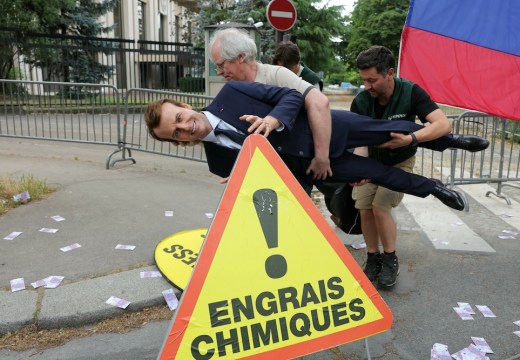

![Masterpiece [Re]discovery 2022. Photo: Ben Fisher Photography, courtesy of Masterpiece London](https://apollo-magazine.com/wp-content/uploads/2022/07/MPL2022_4263.jpg)
‘A revolutionary flame burned bright within him’: David Bindman (1940–2025)